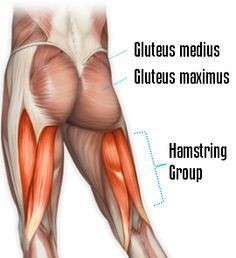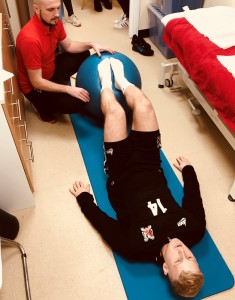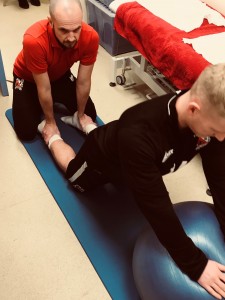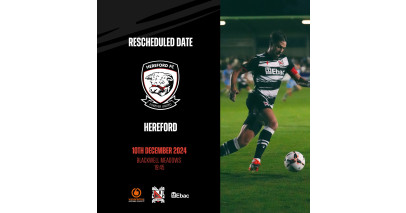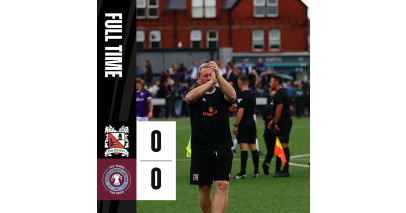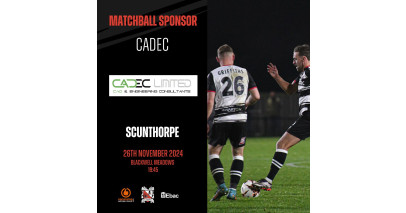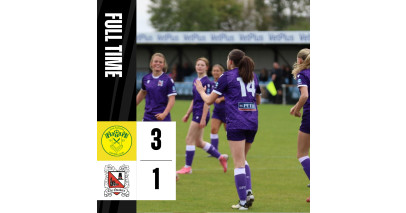From the Physio's Room
By Ray Simpson

In the first of a new occasional series on sporting injuries, our new first team physio Dave Bracken...
Hamstring Injuries: Prevention and Treatment featuring Tom Portas First Team Player.
One of the most common soft tissue injuries in football is the hamstring strain. There is a high incidence of hamstring injuries in sports that involve sprinting and kicking. In human anatomy, a hamstring is made up of the three muscles in between the hip and the knee. Despite our increased knowledge of hamstring muscle injuries, reoccurrence rates remain high and is now thought strength deficits are an important factor. Most of these injuries occur when the hamstring is working to decelerate an extending knee and requires a substantial force for the injury to occur.
Our featured player Tom Portas will agree his main problem is the frequency his hamstring injury reoccurs. This is frustrating to a player like Tom because symptoms are persistent, healing is slow and the rate of reinjury is high.
As the first team Physiotherapist my primary objective of rehabilitation is to help Tom restore maximum function as soon as possible. To effectively manage a hamstring strain, it is important to determine the correct diagnosis and rule out other causes of pain in the back of the thigh, an example of this would be referred pain from the low back. Other factors to consider are age, previous injury, poor flexibility and weak hamstrings. I also consider external factors -- for example has there been a change in training or other factors outside of football e.g. prolonged sitting at work that caused the injury.
In the case of Tom, I believe fatigue was a contributing factor to his hamstring injury. Fatigued muscles are less able to absorb energy and occur towards the end of a game. In the FA Trophy game at home to Harrogate. Tom was substituted with 10 minutes remaining.
An example of the type of exercises/ treatment that Tom and anyone else experiencing a chronic reoccurring hamstring muscle tear should consider are as follows:
- Warm up and post exercise stretching routine targeting the hamstrings.
- Soft tissue massage therapy.
- Manual therapy to any stiff joints in the low back.
- Core Stability (Pic 2)
- Sciatic nerve mobilisations.
- Nordic Eccentric hamstring strengthening program (Pic 3).
If you have any questions relating to hamstring strains, their prevention and treatment please feel fee to email me at info@imaginephysio.co.uk.
By David Bracken Chartered Physiotherapist and 1st Team Physiotherapist Darlington Football Club



